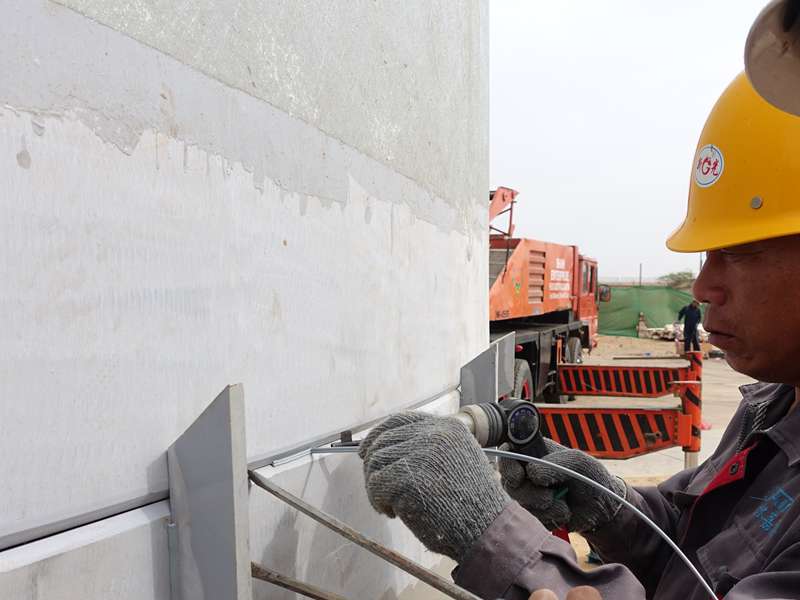Dual Laminate Products: Chemical-Resistant, Custom Built
Field Notes on Dual Laminate Products: where thermoplastics meet FRP
I’ve walked more than a few plants where steel kept surrendering to hot acids. That’s usually where Dual Laminate Products step in—thermoplastic liners (PVC, CPVC, PP, PE, PVDF, HDPE) backed by fiberglass-reinforced plastic (FRP) using corrosion‑resistant resins. Jrain, based at No. 1289, Yingbin South Street, Jizhou District, Hengshui, Hebei, China, has been quietly winning bids with custom sizes not limited by molds or mandrels. To be honest, the flexibility matters more than people admit.

What’s trending (and why it matters)
Across chemicals, battery metals, and wastewater, specifiers are shifting to Dual Laminate Products for higher temperature envelopes and lower life-cycle cost. PVDF liners are seeing a bump with chlorinated services; CPVC where budgets fight heat; PP when temperature is modest but caustic is high. Surprisingly, many customers say the fast install and lighter lifts are as valuable as corrosion resistance.
How they’re built: materials, methods, testing
Typical Jrain flow: select liner (PVC/CPVC/PP/PE/PVDF/HDPE), surface prep, thermoplastic welding of seams, then FRP overwrap via filament winding or contact molding; vacuum infusion for thicker shells. Resins are often vinyl ester for chemical service. QA includes spark testing on liners, hydrostatic tests, and laminate QC per ASME RTP-1. Service life is often ≈20–30 years in design envelope; real-world use may vary with thermal cycling and UV.
Core specs (typical ranges)
| Parameter | PVC | CPVC | PP/PE | PVDF |
|---|---|---|---|---|
| Max continuous temp | ≈60–65°C | ≈90–95°C | ≈80–90°C | ≈120–140°C |
| pH suitability | 1–14 (check oxidizers) | 1–14 hot | 2–14 | 1–14 incl. chlorinated |
| FRP hoop strength | ≈200–400 MPa depending on layup/resin | |||
| Pressure rating | Up to ≈10–25 bar (design + code) | |||
| Sizes | Custom; not limited by molds/mandrels | |||
Testing touchpoints: ASTM D2992 (pressure cycling), ASTM D1599 (burst), ASTM D638 (tensile), ASME RTP‑1 visual/laminate QC, ISO 14692 for piping. A recent PVDF/VE spool I saw burst at ≈2.7× design—comforting margin.

Where they’re used
- Chlor-alkali brine and chlorine scrubbers. - Acid pickling lines in metals. - Battery materials (H2SO4, HCl, HF traces), to be honest, PVDF shines here. - Wastewater neutralization and caustic storage. - FGD and mining slurries (with abrasion liners). - Microelectronics wet processes when metal contamination must be minimal.
Customization and options
Nozzle packs, flanges, conductive PE for static dissipation, UV topcoats, heat-traced jackets, field joints, and prefabs for tight turnarounds. Many customers say Jrain’s “fit-to-plant” approach saves cranes and downtime.
Vendor snapshot (not all vendors are equal)
| Vendor | Liner options | Lead time | Certs/Standards | Customization |
|---|---|---|---|---|
| Jrain | PVC, CPVC, PP, PE, PVDF, HDPE | Around 3–8 weeks | ASME RTP‑1, ISO 14692 aware | High; not mold-limited |
| Vendor A (typical) | PVC, PP, PVDF | 6–12 weeks | ASTM/ISO partial | Medium |
| Vendor B (catalog) | PVC, PE | Stock or 10+ weeks | Basic factory QA | Low; mold-bound |
Mini case files
Case 1: Acid scrubber upgrade — PVDF/VE ducting at 110°C, Cl2/HCl traces. Pressure tested to 1.5× design; leak test passed. After 18 months, inspection showed negligible liner wear. “Noise dropped and maintenance vanished,” a plant engineer told me, a bit amazed.
Case 2: Caustic storage — PP-lined FRP tank, 50% NaOH at 70°C. Calculated life ≈25 years with corrosion barrier 2.5–3.0 mm and UV topcoat. Secondary containment integrated—simple but effective.

Final take
If you’re wrestling with hot, corrosive service and don’t want the weight penalty of alloys, Dual Laminate Products are a practical, testable, code-aligned path. Just match liner chemistry to media, check your thermal swings, and demand real hydro/burst data. I guess that’s the whole game.
References
Latest news
-
Rectangular Tank Made of Fiberglass Material – Durable, Cost-Effective Liquid Storage SolutionsNewsNov.24,2025
-
Hollow Drill Rods for Efficient Drilling Operations in the Field | Durable, Lightweight & CustomNewsNov.23,2025
-
Powerful yt27 Rock Drill for Tough Mining Surfaces | Durable & PortableNewsNov.23,2025
-
Why the Reversible Drill Bit Is a Versatile Tool for All Your Drilling NeedsNewsNov.22,2025
-
Fiberglass Food Grade Equipment: Key Features, Benefits & Global ImpactNewsNov.22,2025
-
How a Drilling Rod Spirals Down Into the Earth: Tech, Trends & Global ImpactNewsNov.21,2025










